Mythologies and fables are some of the biggest components of human civilization.
No matter which religion, empire, or cultural group that existed throughout history, each of them possesses its own tales and magical revelations.
But it isn’t only humans, gods, demigods, or mythical creatures that have roles in all these mythologies. There are also some animals that exist in our world such as horses.
However, every mythology showcases different forms of horses. Some even have their own unique backstories on what roles these horses play in their tales.
Here are some of the famous horses in mythology that you might’ve never heard of.
Table of Contents
1. Pegasus
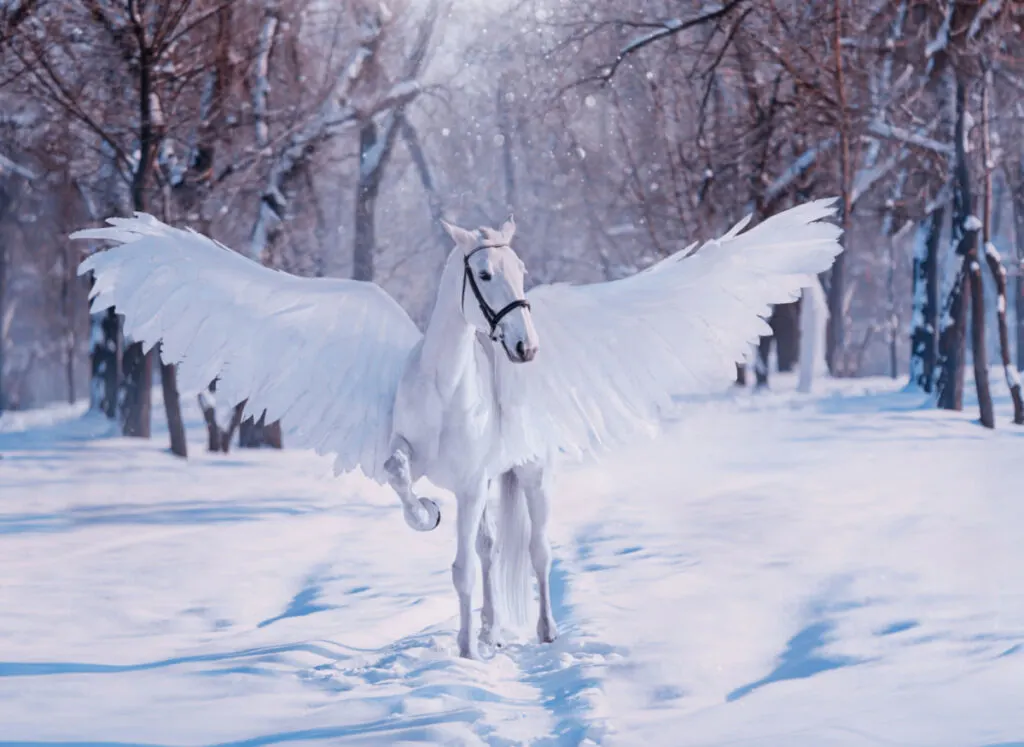
Pegasus is one of the famous mythical horses in Greek mythology. Ancient depictions explained that this immortal winged horse pledged allegiance to Zeus.
One of its roles was to carry thunderbolts and lightning from Mount Olympus.
Pegasus was the offspring of Poseidon and Gorgon Medusa. It was born from Medusa’s neck, right after she got beheaded by Perseus. Pegasus also had a brother known as Chrysaor.
Soon after, Bellerophon, the son of Eurynome and Glaucus, caught, tamed, and rode Pegasus to face Chimaera. After their victory, both of them tried to reach Mount Olympus.
But only Pegasus made it, and Bellerophon ended up dead.
2. Unicorn
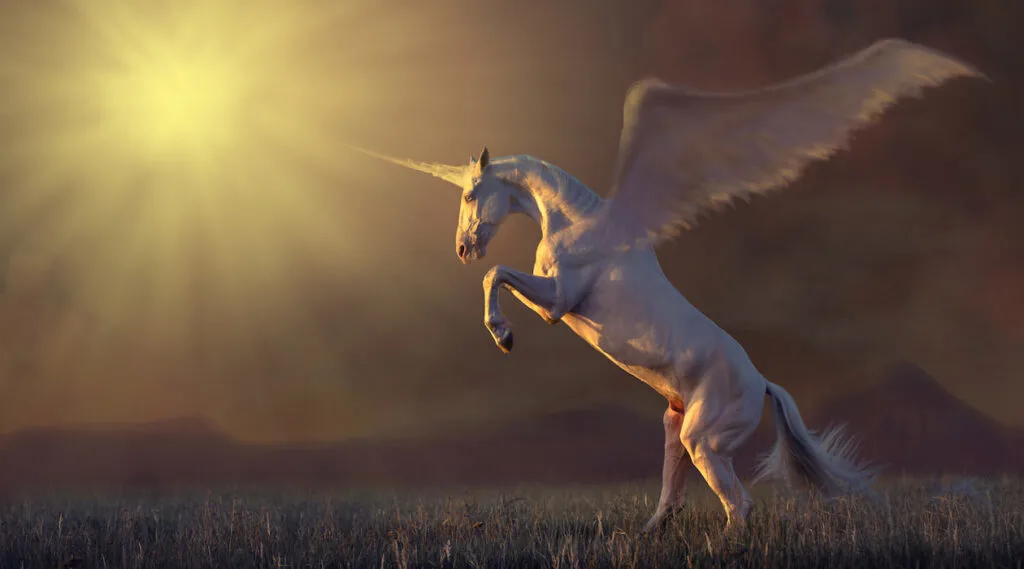
Whether in movies, children’s stories, or ancient legends, everyone has heard about unicorns in one way or another.
But in mythology, this horse isn’t exactly as colorful or vibrant as you might’ve seen in modern stories.
The unicorn is a majestic, pure white horse with long and spiraled horn projecting from the top of its head.
Ancient belief also proposed that the horn, also known as an alicorn, possessed magical powers and the ability to heal diseases.
On the other hand, researchers from St Neots Museum, England think that unicorns didn’t actually exist. Instead, ancient people drew inspiration from an extinct cattle species known as aurochs.
The unicorn has appeared in many mythologies from different civilizations including Indus Valley civilizations, Chinese folklore, and even Western literature. Scotland also has adopted this magical horse into their heraldry.
Fast forward to today, the queer community has made unicorns one of their symbols, especially in advocating individual uniqueness and gender fluidity.
3. Tulpar
Tulpar appeared in Turkic mythology during the 10th century. The name directly translated to “winged horse.”
In other words, Tulpar is the Pegasus of ancient Mongolian and Kazakhstan people. It was also believed that Tulpar was a hybrid creature that was born from a horse and birds of prey.
This mythical horse appears in a manuscript called Irk Bitig and a poem known as the Epic of Manas. Different stories and cultures have portrayed Tulpar in many different versions.
Some people believe that Tulpar is a black-and-white horse, whereas others think that Tulpars come in many different colors. There are also a few theories on how divine this horse is.
For instance, Tulpar only flies at night, in the dark, and no one can actually see its wings. Another theory states that Tulpar’s wings don’t actually exist. It only symbolizes the horse’s speed and agility.
4. Hippoi Athanatoi
Hippoi Athanatoi appear in Greek mythology. They are known as the immortal horses of the gods.
Hippoi Athanatoi consisted of three divine war horses that rode with the gods into battlefields.
Legend has it that the horses were also children of Poseidon, the four wind gods known as the Anemoi and the Harpyiai.
5. Alastor
Alastor was one of the black horses that belonged to Hades, the god of the dead and the king of the underworld in Greek mythology.
There are not many tales or stories that revolve around this mysterious horse.
However, one Latin poet named Claudius Claudinus wrote a poem that described some information about Alastor.
In his poem “The Rape of Proserpine”, Hades rose on a chariot from the underworld to bring Persephone down with him. Four horses drew the chariot including Alastor, Aethon, Orphnaues, and Nycteus.
6. Balius and Xanthus
Balius and Xanthus, or Balios and Xanthos, are children of the harpy, Podarge, and the Greek God of the West Wind, Zephyrus. Another theory also proposed that Xanthus was an offspring of Poseidon.
Balius and Xanthus were immortal horses famous for their godlike speed and their roles in drawing Achilles’s chariot during the Trojan War.
There was also another mortal horse named Pedasus that rode together with Balius and Xanthus during this war.
Achilles received Balius and Xanthus from his father, Peleus, who married the goddess of water, Thetis.
And it was Poseidon who gave these horses as wedding gifts to Achilles’s parents.
Another interesting myth surrounding Xanthus and Balius is that these horses were once Titans or horses ridden by the Giants.
7. Arion
There are a few theories on how Arion was born in Greek mythology. One theory stated that this immortal horse was the offspring of Poseidon and the Olympian goddess, Demeter.
Both Demeter and Poseidon turned into horses and mated, giving birth to Arion. Other theories proposed that Arion was the offspring of Zerpheus and a Harpy or the goddess of Earth, Gaia.
Arion is a mythical giant horse that could run very fast and possessed the ability to speak.
There were a few owners that have ridden and handled Arion including Copreus, Oncus, Heracles, and Adrastus.
8. Kelpie
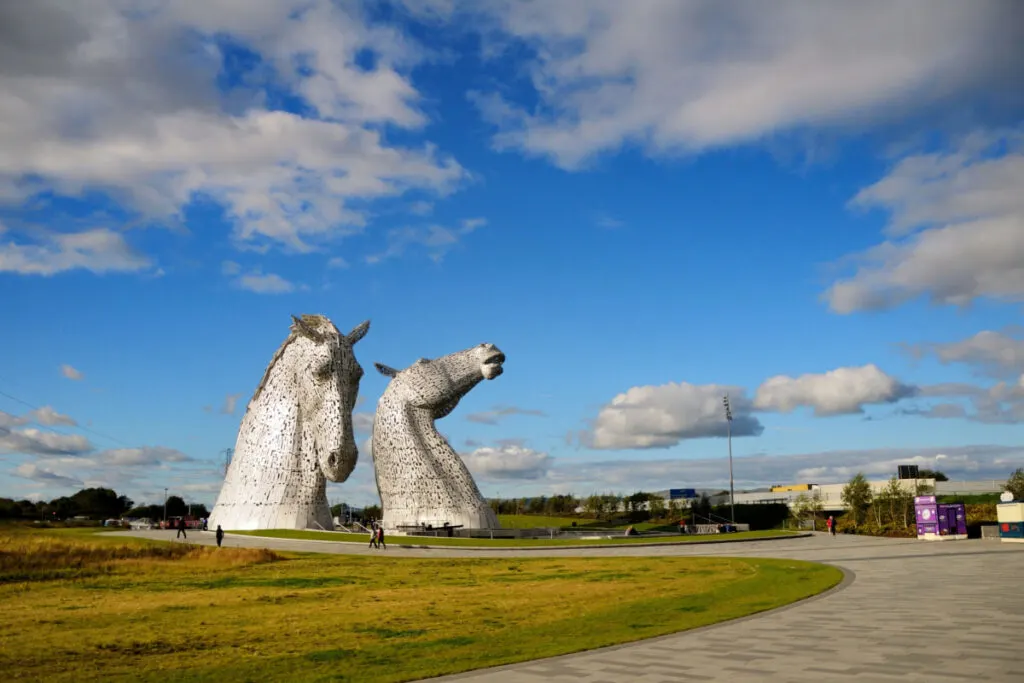
Kelpies originated from Scottish folklore. The ancient Scottish people believed that this shape-shifting water spirit would lure humans and children into the water.
Before it deceived its victims, a Kelpie usually rose from the water and changed its shape into a horse. Then, it would allow humans to ride on its back before bringing them down into the water.
Another myth also said that a Kelpie could appear in human form. When a Kelpie appeared as a hairy male, it would scare travelers and kill them instantly.
But when a Kelpie changed into a female, it would appear highly sexual to lure men into the water.
Yet, there was one good thing that Kelpies did. People believed that Kelpies would howl or wail during stormy seasons. In a way, villagers could prepare themselves in the face of bad weather.
9. Buraq
There are a few phrases in Islamic scriptures such as the Holy Quran and hadiths on Buraq’s existence. The Muslims believe that Buraq or Al-Buraq was responsible for helping Prophet Muhammad to reach heaven.
In Arabic words, the word “Buraq” means shine, brilliance, and lightning. Islamic scholars also have different interpretations of Buraq’s appearance.
Some scholars proposed that Buraq was a half-mule, half-donkey animal with a white body and wings. Other scholars said that it is a mythical beast with wings, a peacock-like tail, and a woman’s head.
Meanwhile, Persian historian, Muhammad Khwandamir elaborated that Buraq was a half-mule, half-donkey, hoofed beast with a human face, elephant ears, horse mane, and camel tail that possessed the ability to fly at the speed of light.
With its magical speed, Buraq could carry Prophet Muhammad from Jerusalem to Heaven and back to Mecca in one night.
10. Hippocampus
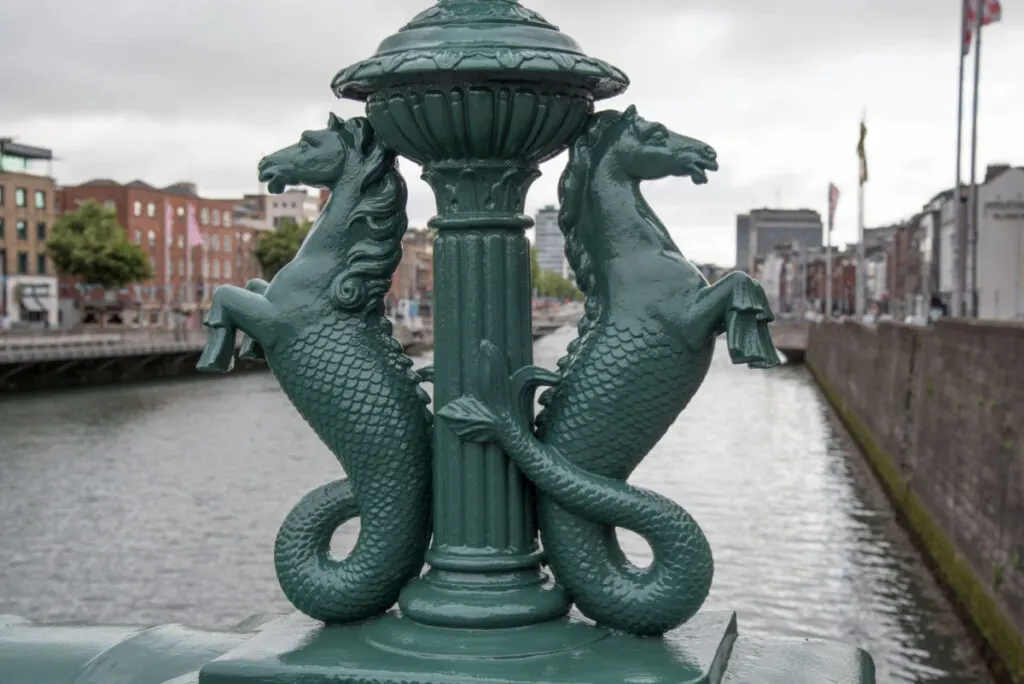
The Hippocampus or hippocamp is a mythical giant marine creature that originated from Greek mythology. It was also mentioned in other folklore including Roman, Phoenician, Pictish, and Etruscan.
Legend has it that this magical seahorse was a hybrid between a horse and a fish with green or blue skins.
People also believe that the hippocamps possess many magical abilities such as shapeshifting, aquakinesis, immortality, and the power to control the weather.
In Greek mythology, Poseidon used a few hippocamps to pull his chariot. The sea nymphs, Nereides, also rode hippocamps.
But this seahorse was not a dangerous beast. It could get along with other animals and the gods. It also aided drowning seamen or sea travelers that had encountered troubles in the sea.
The Hippocampus carries many significant values and symbolisms. It represents good omen, bravery, freedom, humility, helpfulness, bravery, and strength.
11. Mares of Diomedes
In Greek mythology, the Mares of Diomedes are a group of four dangerous and wild horses owned by the giant Diomedes, king of the Thracian tribe. They are also known as the Mares of Thrace.
These four horses were Xanthos, Podargos, Deinos, and Lampon. Diomedes fed these horses with human flesh, making them violently thirsty for blood and human flesh.
Another myth also proposed that the Mares of Diomedes were savage creatures that could breathe fire. They were also tied to a bronze manger.
In the Labours of Heracles, he received an order from King Eurystheus to steal these mares. He didn’t know that these horses were hard to control until he fed them with human meats.
Another version also stated that Heracles came with a group of men to steal these horses. Then, he left the horses with his companion, Abderus, before continuing his mission to fight Diomedes.
12. Tianma
Tianma appears in Chinese folklore as a winged horse with dragon scales. Ancient Chinese people used to believe that this horse could fly and sweat blood.
There’s also another theory that proposed Tianma wasn’t actually a horse. It was actually a giant flying dog with a black head that lived on a mountain.
13. Four Horses of Lord Krishna
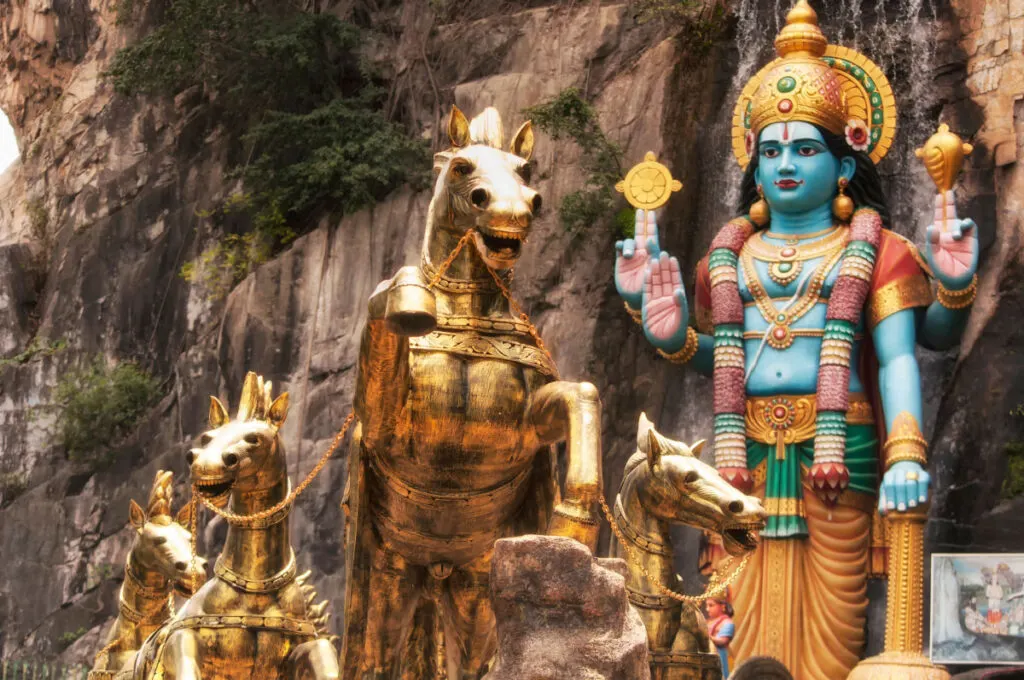
In Indian mythology, there are four horses that pull Lord Krishna’s chariot. They are known as the Four Vedas.
Each horse is different from one another. The first horse known as Saibya is green. The second horse called Sugriva has whitish-gray or yellowish-golden skin.
Meanwhile, the third horse known as Meghapuspa has whitish-blue skin similar to clouds. Finally, the fourth horse called Balahaka has an ashen body.
In the Indian epic Mahabharata, one of the heroes named Arjuna also rode the chariot alongside Krishna.
14. Sleipnir
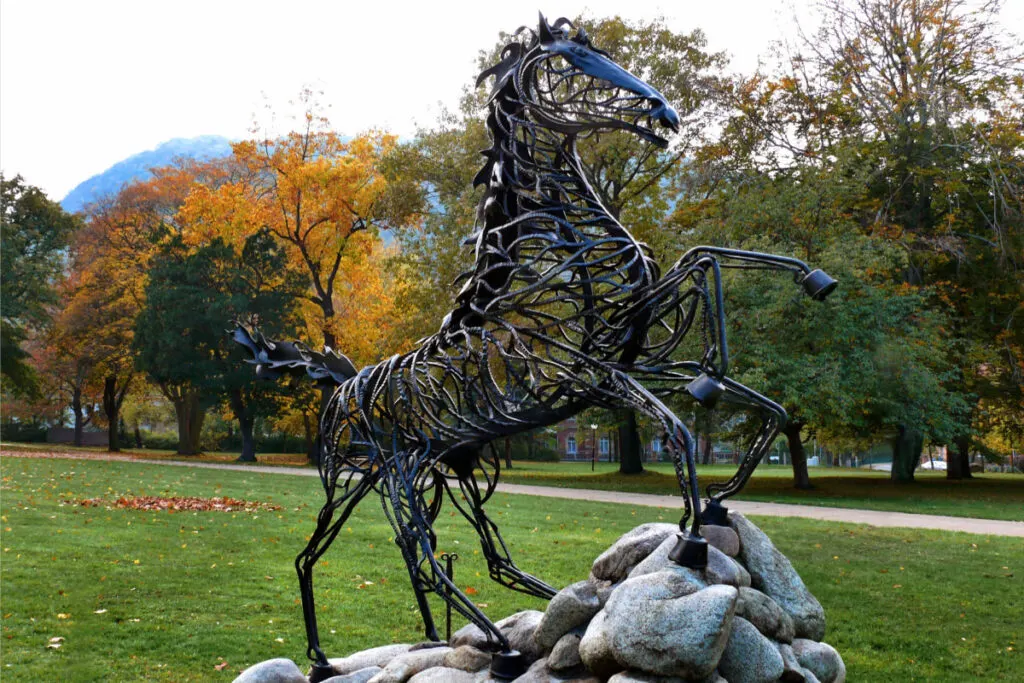
Sleipnir is a powerful horse owned by the Norse god, Odin. In the Old Norse language, Sleipnir means slippery, slides, or glides.
Legend has it that the Sleipnir horse was so large, almost similar to the size of a mountain. It also had gray skin and eight legs.
Due to its enormous size, only Odin and a few shamans managed to ride this horse. Sleipner was also known as the fastest horse in Norse mythology.
It could travel on any terrain to any place in the blink of an eye! Hence, Sleipner symbolizes the wind.
Sleipner was born when Loki changed his shape into an attractive mare and mated with a stallion named Svaoilfari. Another myth also stated that Sleiper had a descendant named Grani.
15. Longma
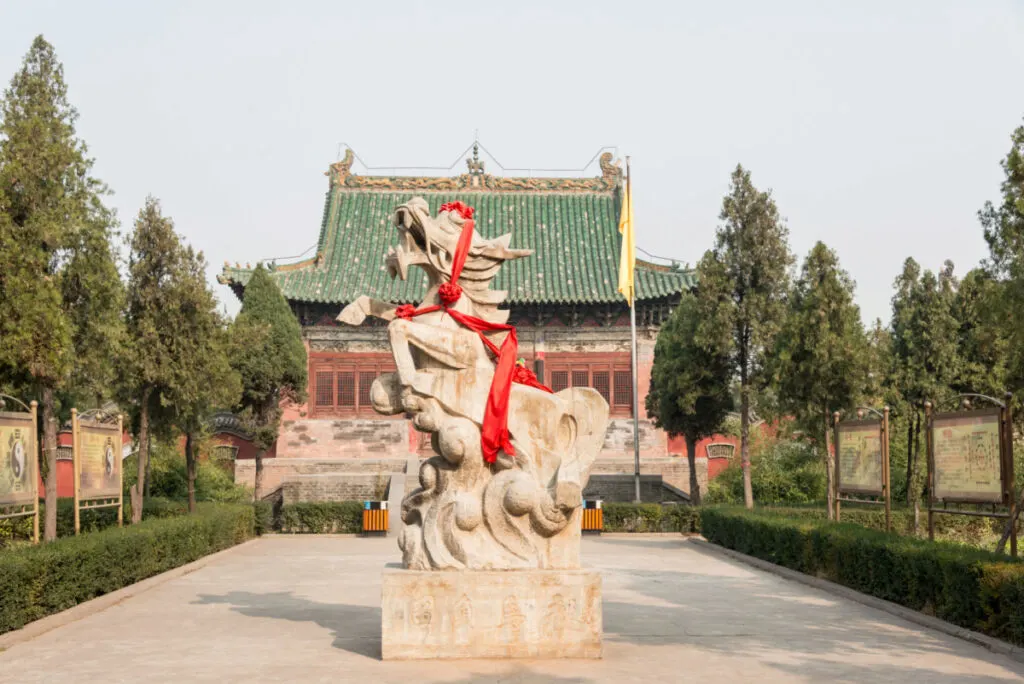
Longma or “dragon horse” appears in ancient Chinese mythology. Legend has it that this winged horse possessed a dragon head and a horse-like body filled with dragon scales.
A scholar named Wan Fu from the Han Dynasty proposed that Longma was actually a dragon with a horse’s head and a snake’s tail. However, ancient Chinese belief also said that Longma carried a good omen to anyone that might have seen it.
In Chinese folklore, there were a few other mythical creatures that could have some connections to Longma.
These include the heavenly horse “Tianma”, a dragon-like creature known as “Qilin”, the white dragon-horse “Wulong”, and one of the sage rulers that belonged to the Three Sovereigns and Five Emperors.
Final Thoughts
Although different mythologies have portrayed their own form of horses, most of these mythical horses share symbolized similar meanings and values across all fables. These include strength, honor, bravery, resiliency, and many more.
To this day, people still perceive horses as exquisite yet formidable animals. Just look at one of the top luxury car manufacturers in this world, Ferrari.
They chose the horse as their company’s official logo!
Resources
- https://interestingliterature.com/2021/06/horse-symbolism-in-literature-myth-meaning-analysis/
- https://www.greekmythology.com/Myths/Creatures/Pegasus/pegasus.html
- https://en.wikipedia.org/wiki/Pegasus
- https://en.wikipedia.org/wiki/Tulpar
- https://lovetheenergy.com/tulpar/
- https://www.livescience.com/origins-of-unicorns
- https://en.wikipedia.org/wiki/Unicorn
- https://www.theoi.com/Ther/Hippoi.html
- https://members.ancient-origins.net/articles/horses
- https://www.hellenicaworld.com/Greece/Mythology/en/AlastorHorse.html
- https://www.quora.com/What-are-the-names-of-Hades-stallions-in-Greek-mythology
- https://mythopedia.com/topics/balius-and-xanthus
- https://en.wikipedia.org/wiki/Balius_and_Xanthus
- https://greekgodsandgoddesses.net/myths/arion/
- https://www.theoi.com/Ther/HipposAreion.html
- https://www.icysedgwick.com/kelpies-folklore/
- https://www.historic-uk.com/CultureUK/The-Kelpie/
- https://mapacademy.io/article/buraq/
- https://www.epoch-magazine.com/ignatovaflashoflightning
- https://ancient-literature.com/hippocampus-mythology/
- https://symbolsage.com/hippocampus-greek-sea-creature/
- https://www.greekmythology.com/Myths/Monsters/Mares_of_Diomedes/mares_of_diomedes.html
- https://en.wikipedia.org/wiki/Mares_of_Diomedes
- https://en.wikipedia.org/wiki/Tianma
- https://www.chinabeastsandlegends.com/tian-ma
- https://vaniquotes.org/wiki/The_names_and_descriptions_of_the_horses_of_Krsna%27s_chariot,_the_first_one,_Saibya,_was_greenish;_the_second,_Sugriva,_was_grayish_like_ice;_the_third,_Meghapuspa,_was_the_color_of_a_new_cloud;_and_the_last,_Balahaka,_was_of_ashen_color
- https://tamilandvedas.com/tag/four-horses/
- https://study.com/academy/lesson/sleipnir-norse-mythology-origin-role-depiction.html
- https://norse-mythology.org/gods-and-creatures/others/sleipnir/
- https://en.wikipedia.org/wiki/Longma
- https://symbolsage.com/longma-chinese-dragon-horse/

